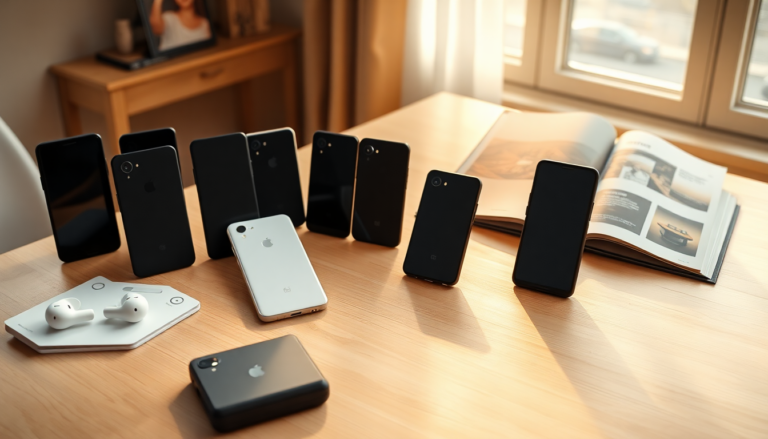Argomenti trattati
As we celebrate a decade of Google Pixel smartphones, it’s the perfect moment to reflect on their journey—one filled with innovation, design changes, and a few bumps along the way. From the original Pixel to the latest Pixel 10 series, each model tells a unique story, highlighting Google’s ambition to carve out its own space in the crowded smartphone market. So, how do these devices stack up against one another? This article ranks every Pixel model released over the past ten years, providing insights into what made each one shine—or stumble.
Market Overview: The Evolution of Pixel Smartphones
The smartphone landscape has undergone a seismic shift in the last decade. When Google launched its Pixel lineup, it aimed to position itself as a serious contender in this competitive arena. The original Pixel came with high hopes, featuring a stock Android experience and a focus on camera capabilities that promised to revolutionize mobile photography.
However, Google’s path hasn’t been without challenges. There have been hardware missteps and software hiccups along the way. For instance, while the Pixel 6 brought a much-anticipated redesign, it also faced criticism due to significant hardware problems that affected its reputation. In contrast, the Pixel 2 XL raised the bar for smartphone photography, winning accolades for its impressive camera performance. What does this tell us about the importance of a model’s reputation in the marketplace?
As we delve into sales figures and consumer feedback, it becomes clear that location, both in terms of market strategy and user demographics, plays a vital role in a smartphone’s success. Google has adeptly targeted various audiences, striking a balance between innovation and affordability. The data from market analyses illustrate how the Pixel series has evolved, responding to consumer needs and market demands over time.
Highlighting Standout Models: From Triumph to Trials
Within the Pixel lineup, some models have risen to fan-favorite status, while others have struggled. The Pixel 2 XL continues to be a standout for its exceptional camera capabilities, which truly transformed smartphone photography. Many users fondly remember the first time they captured stunning portrait shots, a testament to Google’s image processing expertise. Isn’t it fascinating how technology can change our everyday experiences?
On the flip side, the Pixel 6, though initially exciting for its fresh design and new Tensor chipset, ultimately fell short due to significant software and hardware issues. Users reported frustrating connectivity problems and sluggish performance, which tarnished its reputation. This experience served as a crucial learning opportunity for Google, pushing them to enhance subsequent releases.
Diving deeper into the Pixel family, the Pixel 8 Pro and Pixel 10 Pro XL have recently garnered attention for their impressive performance and reliable software experience. Users rave about the advancements in AI integration and battery life, showcasing Google’s dedication to refining its devices. The Pixel 10 series, in particular, shines with its vibrant display and smooth performance, reflecting the culmination of lessons learned over the past decade.
Investment Opportunities in the Pixel Lineup
For tech enthusiasts and investors alike, the Pixel series presents some intriguing opportunities. As the smartphone market evolves, understanding the investment potential of these devices is key. The Pixel A-series, especially the Pixel 6a, has emerged as a popular choice for budget-conscious consumers who don’t want to compromise on quality. With its powerful Tensor chipset and excellent camera capabilities, it offers a compelling value.
Looking at the broader trends in pricing and consumer interest, it’s evident that flagship models hold their value well, particularly when compared to competitors. With Google’s commitment to long-term software support, devices like the Pixel 10 Pro XL may provide substantial ROI for those seeking a premium smartphone experience. Isn’t it interesting how investment in technology can yield returns over time?
Moreover, as the tech landscape continues to evolve, the demand for reliable and feature-rich smartphones remains robust. Historical data indicates that consumers are drawn to devices that not only perform admirably but also adapt with software updates and new features. This trend suggests that investing in the latest Pixel models could lead to favorable returns in the long run.

